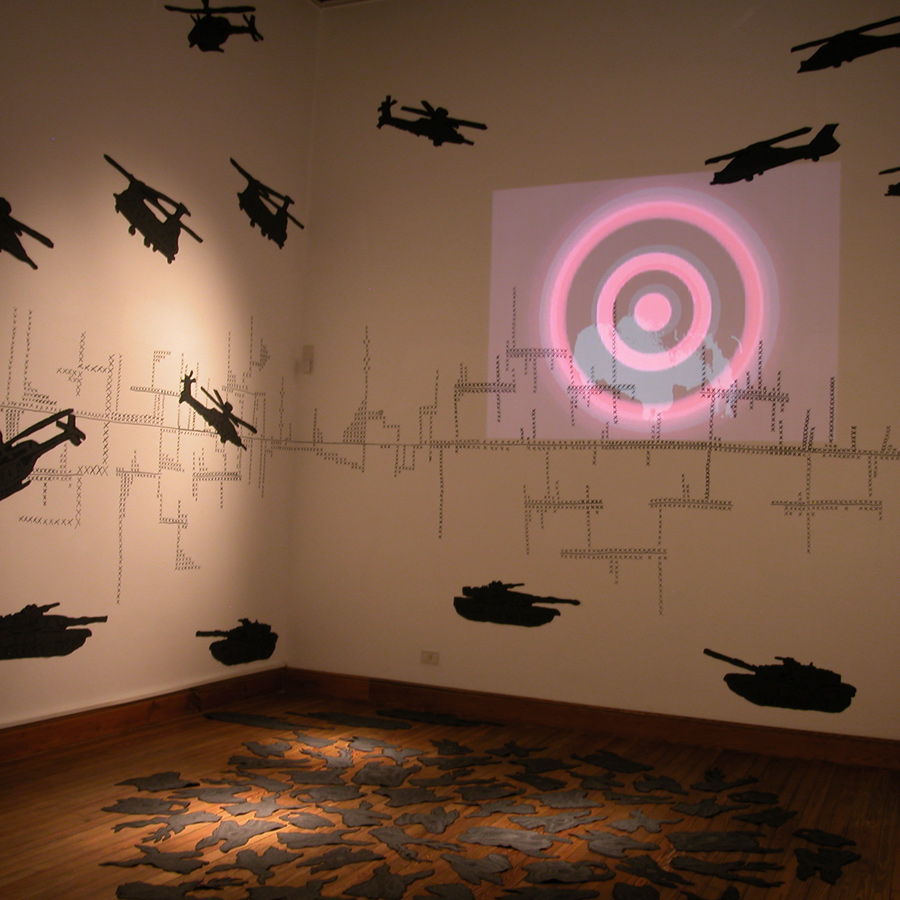Activities
Exhibitions, Fellowships
Visible_Invisible
16.03.16
After almost a year of the development of the inQubarte program, we reached the final exhibition at ´ace‘s studio. Each of the 10 artists who was part of the program worked on a piece based on the title concept of Visible_Invisible.
The exhibition opened in the ´aceNITE of March 16th, 2016 in the Políglota Room and was composed of works in different papers, sculptures, installations with organic materials and even an audiovisual work that brought together the participation of all artists.
Roma Blanco (Argentina) presented a work in collaboration with the other participants of inQubarte and Melina Tocce (audiovisual collaboration) entitled 9 posibilidades de plegado para un prospecto (“9 Folding Possibilities for a Prospect”). She used drugs prospects as a starting point; the pharmacological world appears frequently in the work of this artist. She proposed to each artist to freely intervene a prospect. The documentation of the link that each artist established with the prospect composed the work of Roma.
Javier Cuberos (Argentina) presented Dieciséis apropiaciones para una imagen (“Sixteen Appropriations for an Image”), a work that questioned through collage the serialisation of de-constructed images. Emilia del Valle (Argentina) presented Cada cuerpo es un hogar (“Each Body is a Home”), a piece that showed through an object how each body is modified in each context, with its light and individual reflections, referring at the same time to the human body, its existence as a something that contains but at the same time needs of containment, something that needs its own identity but this identity is at the end defined by the whole.
Anastasia Moiseeff (Argentina) with Sin tinta, marcas de agua (”No ink, watermarks”) made portraits on paper of animals which are native from the area where she lives (north of the province of Buenos Aires) and are disappearing. Through different ways of marking the paper, with perforations, watermark, drawing, Anastasia outlined varying degrees of presence/existence of the animals.
Meditación en acción (“Meditation in Action”) is the work that Andréz Martinéz (Uruguay) carried out following an exercise-ritual of sgraffito on paper through which he reflected on the act of creation, discipline and patience involved.
In Sintonía perturbada (“Disturbed Tuning”) of Josemiel Platz (Argentina) we see a paper that not only presents controlled marks, difficult to perceive with the naked eye but has the mark of a relationship, a struggle between the piece and the artist.
Laurel Ponturo (Argentina), with Punto de resistencia (“Resistance Point”), shows us a work that is continuously in transformation, development. A work in which life and death happen simultaneously. We see a paper made by hand that does not change but at the same time, if the proper conditions (of land, lighting and water) are given, life is enabled: the birth of plants.
With Me gusta Iguazú y a Iguazú le gusto yo (“I like Iguazu and Iguazú likes me”), Robin Romanski (Germany) presents works in the form of touristic brochures that express his dissatisfaction with the destinations he visits and his consequent intervention and modification.
Agustin Rincón Méndez presented Pelusas del ombligo (“Navel Fluffs”), a work of prints made with found and manufactured objects through which he puts into play the relation between the unconscious and trash.
Laura Savio (Argentina) developed a work that refers to how the invisibility of temporality becomes present in an organic object such as a stone. A paper re-shaped through different processes, builds new structures and makes visible through its present state, its past.
From different points, all converged on the idea that the visible is not without the invisible and vice versa.
ARTISTS
Romina Blanco
Javier Cuberos
Andréz Martínez
Emilia del Valle
Anastasia Moiseef
Josemil Platz
Agustín Rincón
Robin Romanski
Laura Savio
FUNDACIÓN´ACE FELLOWSHIP
Laura Ponturo
